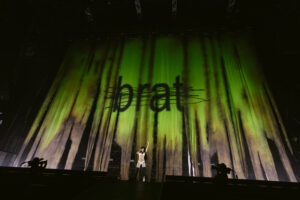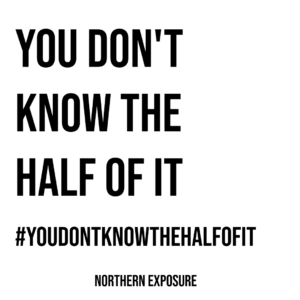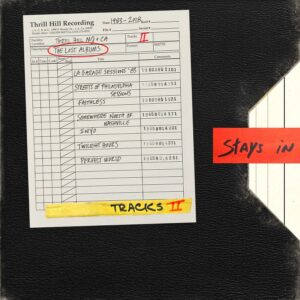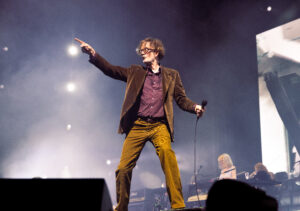TRACKS II: THE LOST ALBUMS – A GARGANTUAN BOX OF TREASURES
TRACKS II: THE LOST ALBUMS, the new box set from Bruce Springsteen, is a massive release, its 83 songs covering over 35 years of recording history.
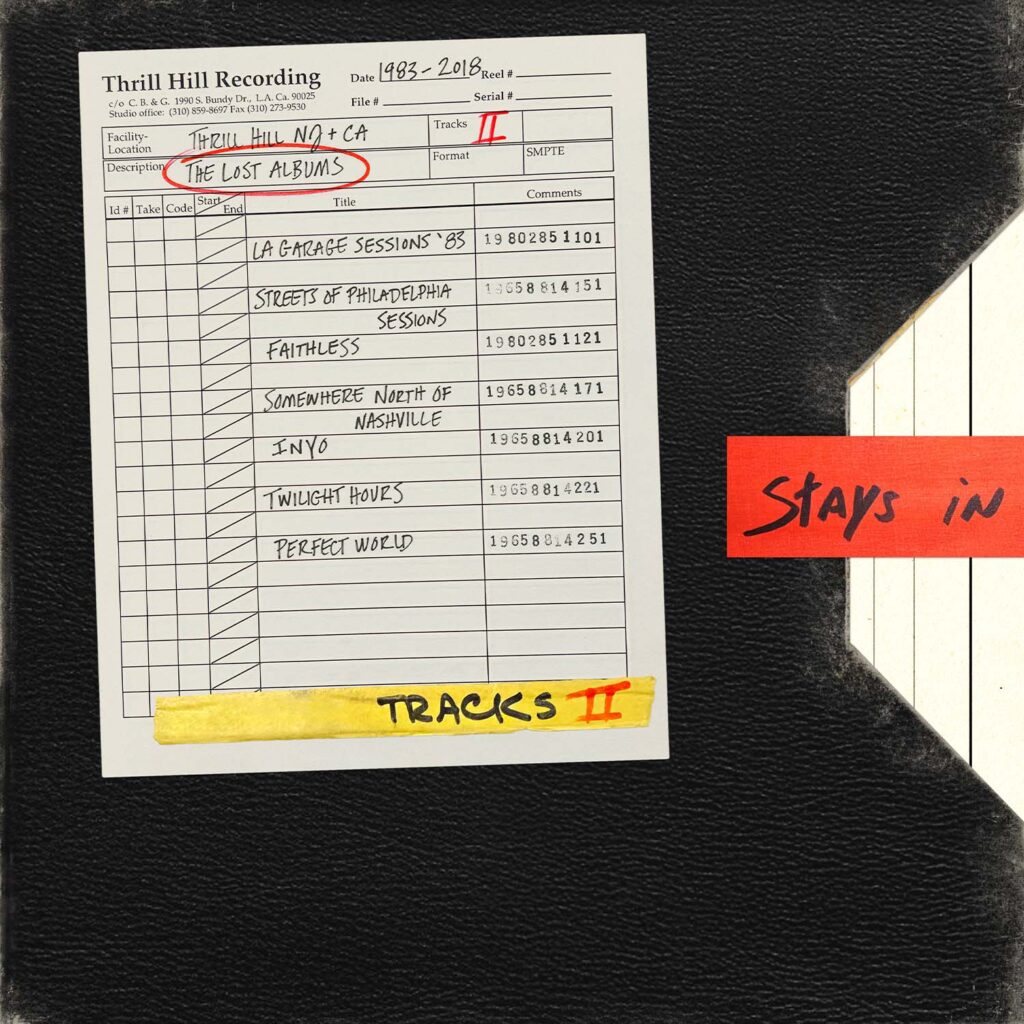
Tracks II: The Lost Albums
ALBUM REVIEW | BRUCE SPRINGSTEEN – TRACKS II: THE LOST ALBUMS by Morris Shamah
TRACKS II: THE LOST ALBUMS, the new box set from Bruce Springsteen, is a massive release, its 83 songs covering over 35 years of recording history. Swinging from lo-fi bedroom demo tapes to fully orchestrated cinema scores, from full band rockabilly to drum-loop-and-synthesizer vibe tracks, from mariachi infused border music to American crooner standards, TRACKS II: THE LOST ALBUMS represents a series of what-ifs and roads not taken from America’s top singer-songwriter-bandleader.
TRACKS, the original release from 1998, was a 66-song collection of outtakes, b-sides and alternate versions presented in (roughly) chronological order, representing an “alternate route” through Bruce Springsteen’s recording career from 1973 to 1995. TRACKS II: THE LOST ALBUMS follows this up by going one step further; here these outtakes and alternate takes are collected into seven distinct and unique albums, each with its own sound, themes, album title, and album art. Where TRACKS gave us a sense of what could have been included on the albums we already got from Springsteen, TRACKS II: THE LOST ALBUMS instead fills in the gaps between those releases.
It’s a mammoth undertaking. Not only is there an incredible amount of music here, there’s also a ton of different themes and conversations and wildly varied musical styles. If you were to put this box set on shuffle, you’d get whiplash. As a singular release, it’s almost impossible to capture, but as a collection of different albums, it shows off Springsteen’s depth, commitment, and range in a way we simply haven’t seen before.
LA GARAGE SESSIONS ‘83
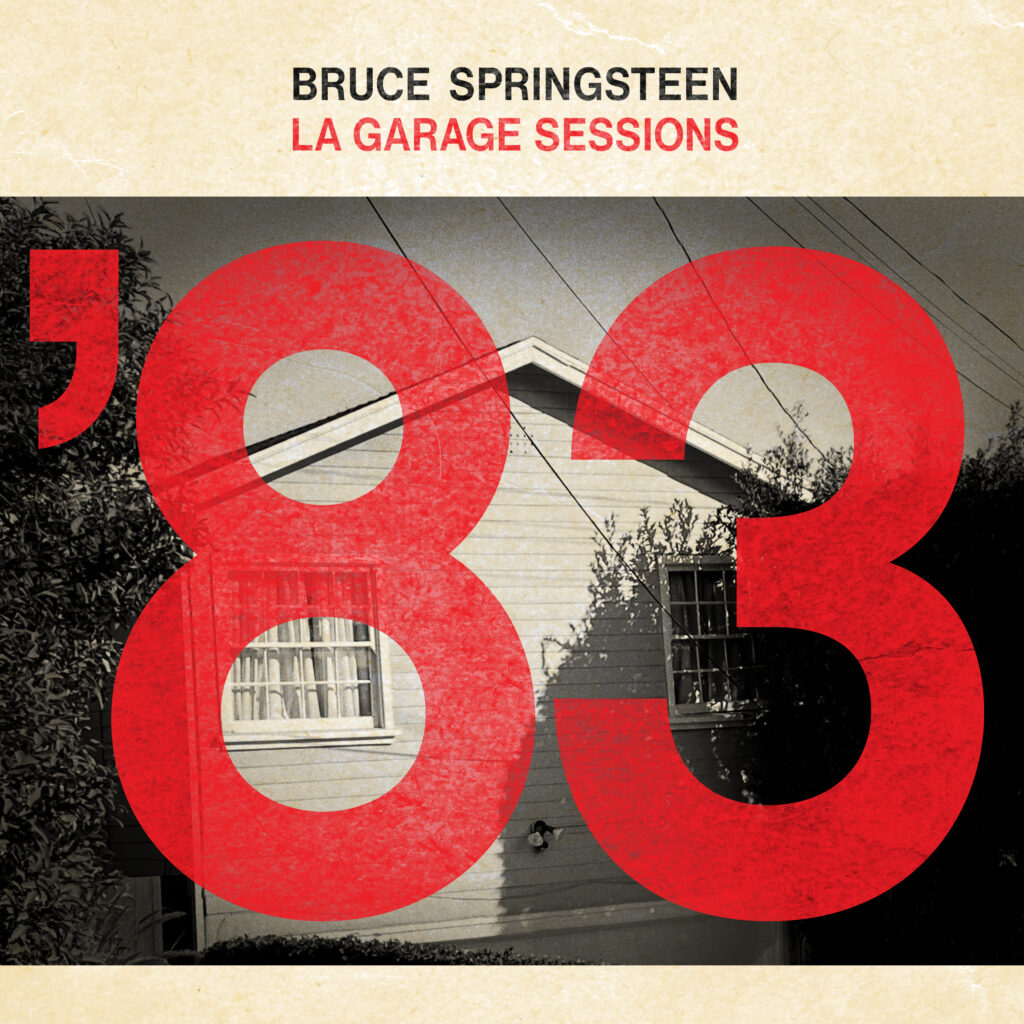
LA GARAGE SESSIONS ‘83 opens this box set with the earliest, and most familiar, work here. These tracks were recorded after the release of 1982’s NEBRASKA, which was wholly unprecedented for Springsteen. He had previously only recorded in studios with The E Street Band, but by recording demos in his bedroom, alone, he unlocked a musical style and perspective he hadn’t previously explored – a bleak, country-eque acoustic styling that would now be called indie, but at the time was simply unheard of. The lyrical content was the darkest of his career, including songs from the point of view of real life serial killers to autobiographical allegories for childhood trauma. It stands alone in Springsteen’s catalog as the rawest and least commercial release to date. He of course followed this up with BORN IN THE USA, his largest-ever album which had him playing the biggest venues of his career all over the world and launched no less than 7 top-ten radio hits. LA GARAGE SESSIONS ‘83 helps fill the gap between those two wildly disparate peaks.
Musically, LA GARAGE SESSIONS ‘83 is very basic. Much like NEBRASKA, the music here is recorded entirely by Springsteen himself. NEBRASKA’s 4-track acoustic guitar and harmonica recording is expanded to include drum machines, bass, backing vocals and synthesizers, but it still feels more connected to NEBRASKA than the pop-rock of BORN IN THE USA. Tempos vary, and some of these songs can almost be called rockers, but the music here is consistently anchored by Springsteen’s lead vocals, which are deep, distant, and haunting, as if from the shadows. While these are demo recordings, they’ve been cleaned up and are presented here as sonically whole finished products. There’s no tape hiss, nor any room noise. It’s a marvel – you’d never guess that these started off as demos to be re-recorded with a band.
As a stand-alone album, it’s a little long at 18 songs. Every song is great, but the recording style is so uniquely itself that it’s begging to be edited down to a tight single-LP to really hit you in the gut. However, as an archival release, it shines as the middle installment of what is now Bruce’s early 80’s Regan’s America trilogy. LA GARAGE SESSIONS ‘83 is the glue that helps recontextualise BORN IN THE USA as a collection of stories that captures the same loneliness as NEBRASKA. Where NEBRASKA is about the people you see on the news at five, LA GARAGE SESSIONS ’83 and BORN IN THE USA are about your neighbors, and your friends, and even yourself.
The album starts with FOLLOW THAT DREAM, a re-arrangement of an Elvis Presley classic. It helps to set the tone here – this is an album about people on the edge, clinging to hope. JIM DEER follows a thief who speaks like he’s sharing at a Thieves Anonymous group therapy session – “I stole from the law / I stole from her pa / I probably stole from you, sir.” MY HOMETOWN, a song that was ultimately re-recorded and released as the last song on BORN IN THE USA, is here in its complete original demo version and is transformed from a nostalgia trip to a prayer for peace and belonging. Throughout this record, Springsteen follows a cast of characters that are a bit more connected to the world around them than the loners on NEBRASKA, but are just as nervous and confused about their place in society.
The clear standout is SHUT OUT THE LIGHT, which was also re-recorded for BORN IN THE USA with the E Street Band and was released as a b-side to the title track. Here, it’s stripped back instrumentally, but it’s presented with its lyrics whole. Apparently Springsteen cut an entire two verses from this song. SHUT OUT THE LIGHT tells the story of a Vietnam veteran who comes back from ‘over there’ to his family and life, but struggles with PTSD. The added two verses introduce a drug problem and dives deeper into the sinking and overwhelming feelings that come with surviving trauma.
On Springsteen’s current tour, he introduces RAINMAKER, from 2020’s LETTER TO YOU, by stating “when conditions in a country are ripe for a demagogue, you can bet one will show up.” LA GARAGE SESSIONS ‘83 represents that very statement exceptionally well.
STREETS OF PHILADELPHIA SESSIONS
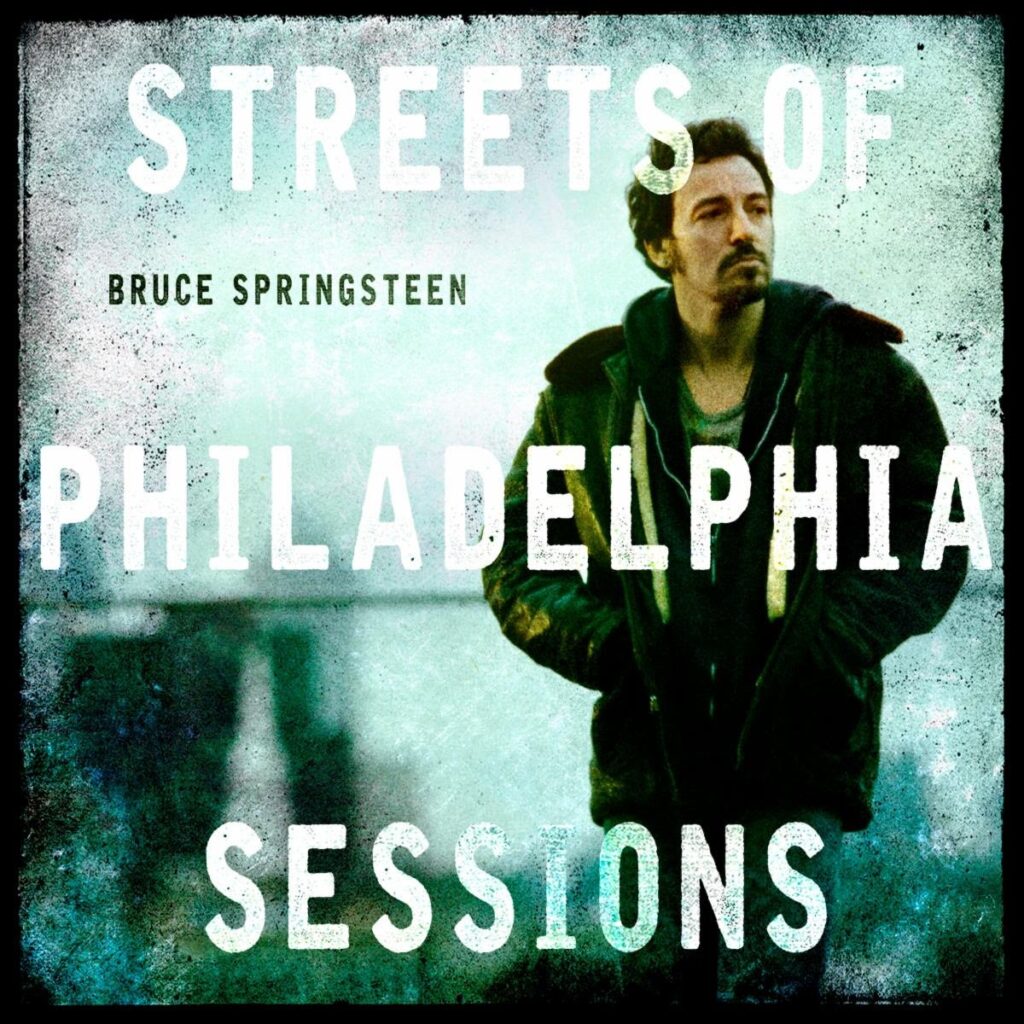
In the early 1990s, Springsteen simultaneously released a pair of albums, HUMAN TOUCH and LUCKY TOWN, both of which were widely considered to be the first disappointments in his recording career. The subsequent tour was his first without the E Street Band, and while it was objectively a creative and commercial success, it didn’t exactly set the world on fire like his tours did in the ’80s. Springsteen followed this low point up with STREETS OF PHILADELPHIA, written and recorded for the movie Philadelphia. It was based around drum loops and synthesizers, but unlike his recordings from 1983, which were inspired by rock and country, STREETS OF PHILADELPHIA was inspired by west-coast hip-hop, and marked perhaps the wildest genre turn in Springsteen’s 20 years of releasing music at that point. It was a huge swing – but it paid off, winning both the Academy Award and the Golden Globe for Best Original Song, along with four Grammy awards, went platinum in 5 countries including the US and the UK, and was listed in the Rock And Roll Hall of Fame’s 500 Songs that Shaped Rock and Roll. As legend goes, Springsteen recorded an entire album with the same brooding vibe and then never released it. TRACKS II: THE LOST ALBUMS is here to say the legend is true, but don’t call it a hip hop album.
STREETS OF PHILADELPHIA SESSIONS listens like the soundtrack to a film. Which, of course, it started out as, even if the title track isn’t actually on this album. It’s dark and brooding, but propulsive; it ripples with an energy that is entirely unexpected. Many of the tracks – particularly the opening trio of BLIND SPOT, MAYBE I DON’T KNOW YOU, and SOMETHING IN THE WELL – live up to the promise of an album based around drum loops and samples. But many of these songs are almost classic Springsteen rockers. ONE BEAUTIFUL MORNING easily could have fit in on 1992’s LUCKY TOWN record, as could WAITING ON THE END OF THE WORLD with just a bit of tweaking. One of the most interesting tracks here is SECRET GARDEN, which was re-recorded with The E Street Band and released on GREATEST HITS and on the Jerry Maguire soundtrack. Listening to it in its original demo form is, in a word, spooky. The previous version is romantic, an ode to the unknowing nature of love. It has been played live and dedicated to fans a few times, a testament to its beauty. The version here, however, is desperate and longing, capturing the insecure feelings throughout this album. There’s no change in the lyrics – it’s all down to the instrumentation, which is a testament not only to the transformative power of The E Street Band, but also to the commitment and depth of Springsteen’s solo recordings.
STREETS OF PHILADELPHIA SESSIONS is one of the most anticipated records on this set, as the legend of the lost hip-hop album was one of the strongest rumours and fan’s holy grails for almost thirty years. It almost lives up the legend. The ten tracks here are mostly incredibly new and interesting Springsteen recordings, with a sound that’s not present anywhere else in his catalog. The deep dive on relationship-insecurity is only surpassed by the songwriting on 1987’s TUNNEL OF LOVE. That being said, it’s frustrating that the album doesn’t have an actual album title, especially considering that Springsteen says it was mixed, mastered, and ready for release before it was shelved. It also feels ever so slightly unfinished with its ten-song tracklist, which is confusing. It’s clear why the track STREETS OF PHILADELPHIA isn’t present, as it doesn’t fit the theme, but MISSING (from The Crossing Guard soundtrack in 1995) and LIFT ME UP (from the Limbo soundtrack in 1999) would fit right in and round it all out very nicely.
FAITHLESS

FAITHLESS actually is a film soundtrack. It’s the soundtrack to a western about spirituality and religion, except the film was never made. Springsteen says the film is still “in development” but he’s tired of waiting, and after twenty years (putting the recording of this in the early 2000s, around the same time as when the DEVILS AND DUST album was released), he’s decided to release the album – and what an album it is.
FAITHLESS is one of the only times in Springsteen’s career where he tackles the issue of religion head on. If you told Springsteen in 1978 that he’d do an album that was about religion and faith, I’m fairly sure he’d have hit you in the face with his telecaster. Cut to 2017, when Springsteen closed every night on his Springsteen on Broadway run by reclaiming The Lord’s Prayer as an agnostic anchor for one’s soul. FAITHLESS, despite being inspired by a film and the book it’s based on, couldn’t have come from any one else – the authenticity of simultaneously being hesitant with your faith and being equally confident in being faithless rings through strong and clear, and helps shed light on that journey Springsteen took over the course of his life.
The album is a mix of roots-stomping blues (ALL GOD’S CHILDREN), slide-guitar driven southwestern-Americana (WHERE YOU GOING WHERE YOU FROM, FAITHLESS), acoustic fingerpicked ditty, (GOIN’ TO CALIFORNIA), piano ballads (GOD SENT YOU, MY MASTER’S HAND) and instrumental film score pieces. The album is sequenced brilliantly, with the film score interstitials bridging the more song-like competitions, and connecting the various different genres with an ominous yet soothing set of deep tones, slide guitar and piano. The lyrical content in the songs is quite heavy, appropriately so considering the album’s title and subject matter, so the instrumentals help balance that out with moments of peacefulness and meditation, giving you a chance to center yourself and reset.
The song compositions really shine here. WHERE YOU GOING WHERE YOU FROM is a haunting, searching song which features Springsteen’s three children on blood-harmony backing vocals, (something we’ve only seen previously on 2014’s DOWN IN THE HOLE) which gives a chilling and spooky yet strangely inviting feeling to the track, ALL GOD’S CHILDREN is a wild delta blues stomp that wouldn’t have felt out of place in the film Sinners and contains one of Springsteen’s most chilling couplets – “I scratch me a grave with my own hands / and you can bury me deep in the blood of the land.” It’s a stand-out not only on this record, but on the entire box set. GOING TO CALIFORNIA is a sweet and soft earworm which would have fit well on DEVILS AND DUST. You can just see the film denouement set to it, our protagonist leaving the desert and its questions behind for the promised land of the coast.
FAITHLESS is a fantastic record, with levels to it that only reveal themselves on repeat listens. It’s a rare soundtrack that (clearly) doesn’t need the film itself to feel complete. It’s amazing that a record this specific and unique sat on the shelf for twenty years with no one even knowing it existed, and it’s even more amazing that Hollywood would let a film with a soundtrack this strong go unmade.
SOMEWHERE NORTH OF NASHVILLE

From the isolation tales of LA GARAGE SESSIONS ‘83, through the insecurity of STREETS OF PHILADELPHIA SESSIONS and FAITHLESS, so far the box set has been hitting us with fairly heavy thematic content. SOMEWHERE NORTH OF NASHVILLE is here to bring back the fun.
SOMEWHERE NORTH OF NASHVILLE is the most straightforward of all the albums here – it’s simply a country-rockabilly record. That’s it. There’s no hidden themes or big questions – hell, one of the songs is about a man driving a chicken delivery truck (the aptly named DELIVERY MAN). All of the depth was saved for THE GHOST OF TOM JOAD, Springsteen’s 1995 acoustic record that was recorded simultaneously with this one. It is, however, a really fun time.
If SOMEWHERE NORTH OF NASHVILLE was released in 1995, it likely would have been considered a continuation of HUMAN TOUCH and LUCKY TOWN – rock albums that lack both the depth of Springsteen’s classic era and the power of the E Street Band. Now, 30 years later, as an archival release, it’s a rare case of Springsteen letting the fun of the music come first and foremost. Lead single REPO MAN and TIGER ROSE kick things off, all shuffle drums and lead slide guitar in between Springsteen woopin’ and hollerin’. THE POOR SIDE OF TOWN is a lovely cover, DELIVERY MAN is hilarious , if a bit similar to REPO MAN and DETAIL MAN (how many “MAN” songs can one Bruce Springsteen fit on an unreleased record?), and UNDER A BIG SKY and SILVER MOUNTAIN are piano and organ ballads that sound like they could have fit on Springsteen’s mid-2000s output.
The MVP of SOMEWHERE NORTH OF NASHVILLE is easily the pedal steel guitar work of Marty Rifkin. He’s present on THE GHOST OF TOM JOAD recordings as an ancillary member of the backing instrumentation, but here he’s front and center right alongside Springsteen’s lead vocal. The slide work gives SOMEWHERE NORTH OF NASHVILLE a unique signature among Springsteen’s catalog. These are songs you can easily see The E Street Band performing, but ones that you would love to see the recording band take on live, as well.
Speaking of E Street, there are two songs here that were previously recorded with Springsteen’s longtime collaborators, back in the mid ’80s – JANEY DON’T YOU LOSE HEART and STAND ON IT. Whether you prefer these rockabilly versions or the E Street Band recordings will be a matter of taste, but that in itself is an achievement – to go toe-to-toe with the E Street Band and come out in a draw is a win for any recording band. These versions feel entirely complementary not only to their original versions, but also to the rest of the album.
One of the best things about SOMEWHERE NORTH OF NASHVILLE is how it reclaims Springsteen’s often derided “twang” vocal styling of the late 1990s. Listen to any live version of Thunder Road from the mid 90s through the early 2000s and you’ll hear Springsteen replace the passion and power of the original with a country flair that simply doesn’t quite work. Here, the twang is rampant, and while it will forever be a voice that’s put on rather than natural, it actually works fantastically and feels authentic to the music.
SOMEWHERE NORTH OF NASHVILLE is in many ways a perfect archival release. It’s not exactly essential, and for an artist of Springsteen’s caliber it would be considered a disappointment if it was released as a normal, major career moment album. But it’s not a bad album at all, it’s actually quite a fun, lovely, rollicking ride, and stripped of the pressures of being a canon event and living up to the rest of his curated catalog, it can be appreciated for the good record that it is.
INYO
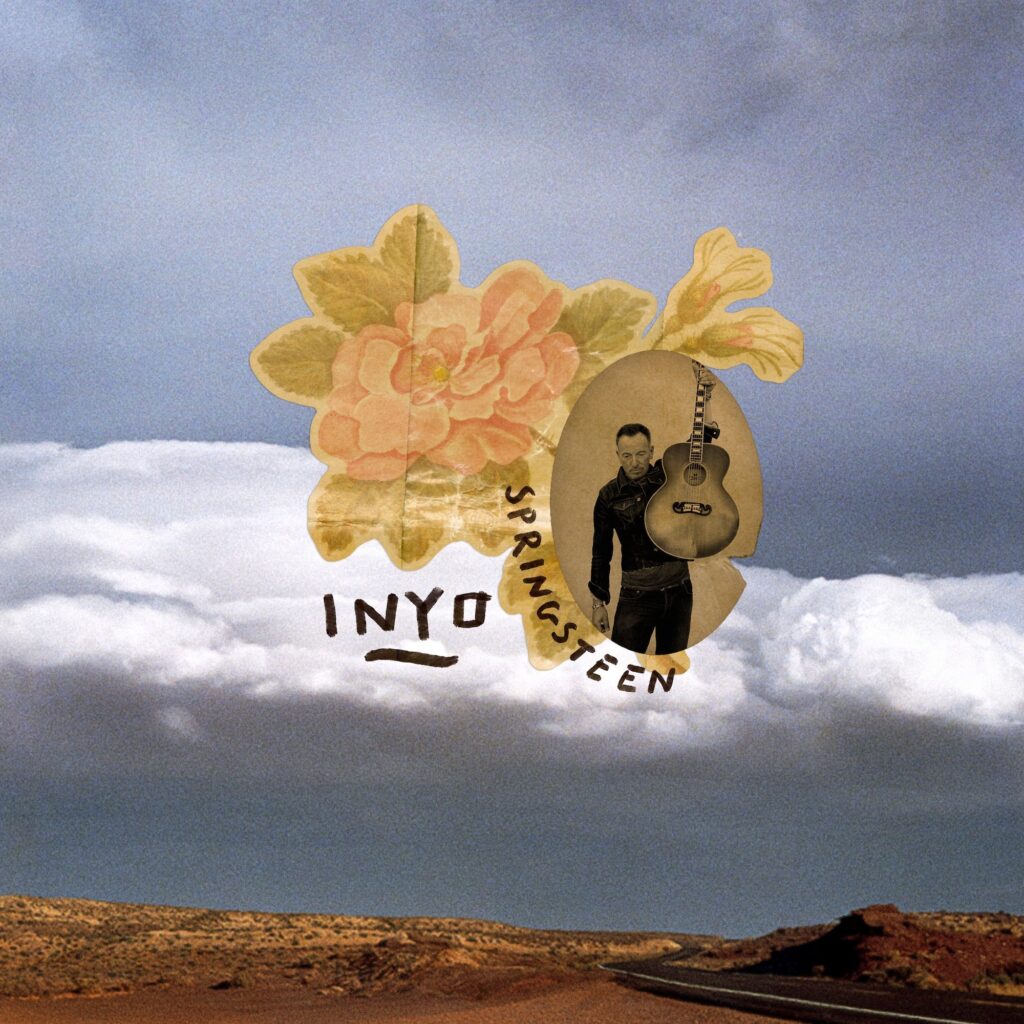
INYO is an album that could easily be a disaster in the hands of any other rich, white, northeastern rock artist. Bruce Springsteen doesn’t have any claim to the music or stories of the American-Mexican border, and making an album in their vein would be considered appropriation. Springsteen, however, does such a good job here of capturing the heart, the stories, and the music of that locale that INYO somehow, miraculously, works.
INYO was recorded while Springsteen was on the road touring behind THE GHOST OF TOM JOAD, and unsurprisingly, it sounds a lot like a sequel to that record. Much like THE GHOST OF TOM JOAD, the stories on INYO are mostly those of tragedy, giving a Shakespearean timelessness to the towns and characters of the southwestern border, from Texas to Northern Mexico to Southern California.
They share similar themes, but musically, it’s a progression from its predecessor. Where THE GHOST OF TOM JOAD was all black and white and shades of brown, INYO is rich pastels and deep watercolours. INYO opens with its title track, which borrows the upfront vocals with instrumentation limited to backing status from much of THE GHOST OF TOM JOAD, but here the instrumentation is a little more developed, and has a bit more personality to it than the musical stylings of the former album. Also present here are harmony backing vocals, which sit somewhere between the lead vocals and the backing instrumentation, and does a really great job of filling out the sound. The result is a more developed sound which lends the songs more character, colour, and invitation. The album continues to grow with this, with ADELITA and THE LOST CHARRO even introducing a mariachi band. By the end of the record, with CIUDAD JUAREZ and WHEN I BUILD MY BEAUTIFUL HOUSE, the album’s sound has been developed enough that when the strings and horns emerge or Springsteen’s vocal comes in at the height of his range, it’s welcome and familiar rather than surprising.
INYO truly is a successor to THE GHOST OF TOM JOAD, which carries a high bar. THE GHOST OF TOM JOAD is one of Springsteen’s most in-depth records – it comes with a bibliography – and represented the first album where Springsteen adopted himself as a travelling troubadour completely, with none of the songs possibly being about Bruce Springsteen himself. This kind of storytelling started with STREETS OF PHILADELPHIA, but continues throughout the rest of Springsteen’s career, so seeing his immediate creative follow-up is nothing less than thrilling.
It does make sense, however, that this wasn’t released. After THE GHOST OF TOM JOAD, releasing such a similar album would have been, at best, simply unnecessary. INYO lacks the sense of purpose that propelled THE GHOST OF TOM JOAD and its subsequent tour. Both albums follow the under-documented and unreported characters of the American-Mexican border, but where THE GHOST OF TOM JOAD found a social justice thread and followed it down deep into the failures of society, the songs on INYO play out more as slice-of-life summations. They’re lovely, detailed, and deep expressions of a rich culture, but they don’t have the angry bite that was so important to THE GHOST OF TOM JOAD. Ultimately, INYO is a colourful and inviting album that simply isn’t as powerful as its stark and bleak predecessor.
TWILIGHT HOURS
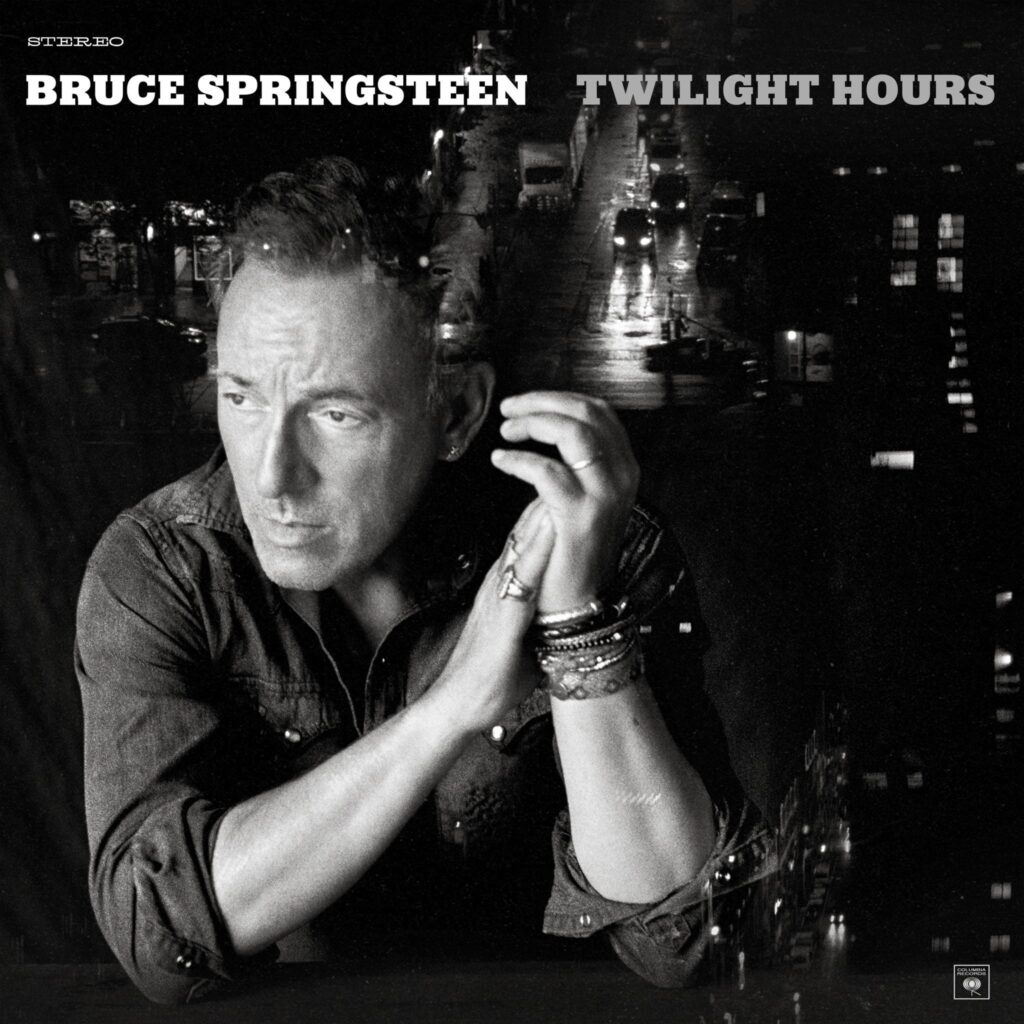
TWILIGHT HOURS is a companion record to Springsteen’s late-career masterpiece, 2019’s WESTERN STARS. Much like SOMEWHERE NORTH OF NASHVILLE and THE GHOST OF TOM JOAD, this album was recorded simultaneously with WESTERN STARS. Unlike SOMEWHERE NORTH OF NASHVILLE and THE GHOST OF TOM JOAD, these two albums feel deeply, intrinsically connected.
TWILIGHT HOURS is very much the evening cityscape version of WESTERN STARS’s daytime desert scenes. Where WESTERN STARS is Glen Campbell, TWILIGHT HOURS is Frank Sinatra. The music is full of horns and strings, jazzy and loungey and could come right out of that great American songbook. Springsteen’s vocal does nothing short of soar throughout, doing justice to the great crooners of the 50s. These songs are full of surprising chord changes and sudden musical motifs. There’s always something that comes through to surprise and delight, in a way we’ve never really seen from Springsteen before. Take the final track, FOLLOW THE SUN, which has a sudden horns led line that comes almost from nowhere, two thirds of the way in. It’s playful and joyous in its spontaneity.
The characters here are, like in all Springsteen songs, looking for something, be it something new and exciting in DINNER AT EIGHT or something domestic and safe in SUNDAY LOVE. (Seriously, those two songs are a real grass is greener pair). HIGH SIERRA drips in noir mystery, while SEPTEMBER KISSES and the title track are songs of lost love. Individually, each song is a stunning representation of Springsteen’s newfound vocal strength and musical range.
The highlight of TWILIGHT STARS is easily the aforementioned HIGH SIERRA, not in the least bit because it sounds the most like a WESTERN STARS track. It’s slow and patient and relaxed in a way that the rest of the album doesn’t quite manage, and it builds and builds into a strings-led swell that’s truly operatic and moving, until it settles back down into a reprieve that highlights the mystery and heartbreak at the core of the track. It stands above the rest of the album as a beacon to what it could or should have been. Unfortunately, while it’s a collection of mostly really great songs, but they don’t come together in the same way they do on WESTERN STARS. There’s something about the peppy urban throwback vibe that hides the longing and loneliness rather than exposing it, and as such the album never becomes larger than the sum of its parts like WESTERN STARS does. TWILIGHT HOURS feels more like a collection of outtakes than a defined record. It’s not sequenced with the care and consideration of say, FAITHLESS, or, of course, WESTERN STARS. Had this been released instead of WESTERN STARS it would have been just as surprising, as it’s a wildly unexpected place for Springsteen to go, and the fact that he actually nails it is a massive achievement. But given that these are sister albums, it’s far too easy to simply say, well, it’s no WESTERN STARS.
PERFECT WORLD
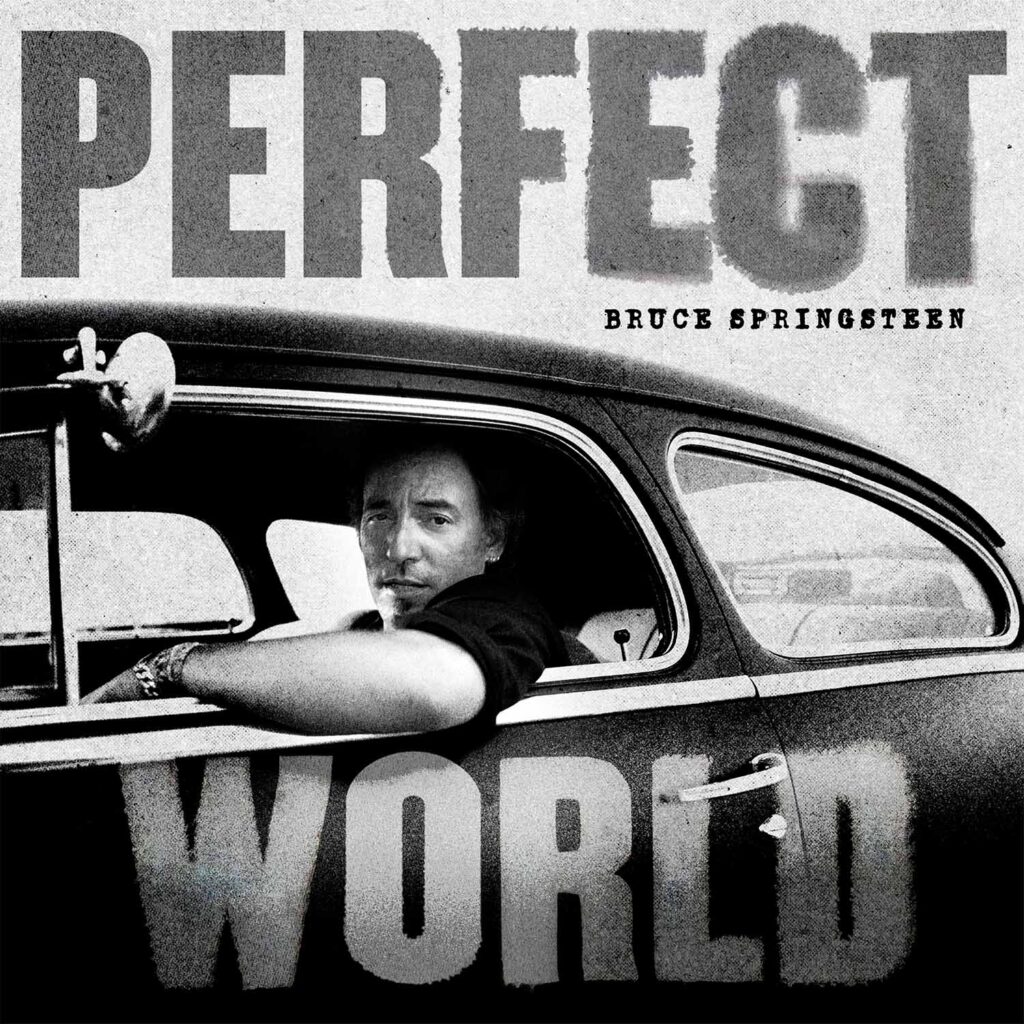
PERFECT WORLD is the only one of the records here that was put together specifically for this box set. To paraphrase Bruce himself, he realised that the box set has a lot of music but no rock music, and so to give fans a bit of what they know and love him for, he put together this final album. It’s chock full of the now-classic modern era Springsteen rock sound, layered acoustic guitars, jangly piano tracks, and pounding drums. Most of these songs would fit in well in an E Street Band set – and true to the nature of this box set, they’re the only songs in the whole package that would.
It opens with three tracks co-written and previously released by Joe Grushecky – I’M NOT SLEEPING, IDIOT’S DELIGHT, and ANOTHER THIN LINE. They immediately jump out of the speakers in a way nothing on this box set has done – it takes over sixty songs to get to an honest-to-goodness guitar solo – but again, that’s exactly why they’re here. IDIOT’S DELIGHT, in particular, stands out as a stomping harmonica-led blues rocker, and lead single RAIN IN THE RIVER is one of the heaviest-rocking tracks Springsteen has released in recent memory.
While this is the box set’s rock album, that doesn’t mean all the tracks are high-energy rockers. THE GREAT DEPRESSION is a mid-tempo ballad and BLIND MAN is a softly sung slow shuffle, although neither are particularly memorable. IF I COULD ONLY BE YOUR LOVER, another slower song, stands out as a unique rock song for Springsteen. It defies most genres, and wouldn’t easily fit on any of his existing records. CUTTING KNIFE, by contrast, could’ve easily replaced any of a half-dozen songs on 2014’s HIGH HOPES, and the album would’ve been better off for it. It all wraps up with the semi-acoustic ballad and title track PERFECT WORLD, which is a mostly harmless easy listening way to close out the album and box set. The less said about penultimate song YOU LIFTED ME UP the better, as it is easily the worst song Springsteen’s released in at least ten years and definitely should’ve been left in the vault.
Being a collection of songs put together for this release, thematically, there’s nothing connecting these songs. Given that it’s not presented as a “lost album” as such, it’s easier to forgive the grab-bag nature of this record than it is on TWILIGHT HOURS, but at the end of the day, the album doesn’t come together in the way Springsteen records are known to do. As an album, it doesn’t rank high among Springsteen’s catalog – in fact, it’s probably in the bottom five – but it does at least sound cohesive and ebbs and flows in all of the right places. These are far from Springsteen’s strongest songs and it is easily the least interesting record on the box set, but it is saved by the five or six songs that are worth a second listen, and that it isn’t pretendinf to be anything other than an act of fan-service that was thrown together.
TRACKS II: THE LOST ALBUMS isn’t like any other archival release. It’s not tied to an existing album or era; it’s not a remastered anniversary release or a collection of demos. It’s truly a series of distinct and unique records. It’s easy to see TRACKS II: THE LOST ALBUMS sitting alongside Springsteen’s other album collections on a vinyl shelf. It slots it right next to his ALBUM COLLECTION VOLUME 1 and VOLUME 2 box sets as, well, a box set of albums.
It’s easy to get lost in the size of the box. Had these 83 songs been presented as a single collection, like the original TRACKS did, most of the power would have been stripped from them. By giving these records their own identities within the box set, they’re really able to shine through on their own merits. Each of these albums, with the exception of PERFECT WORLD, would have been worthy of a full release by any one else. For any other artist, sitting on seven (or six, really) albums of this caliber would be idiotic. For Springsteen, the strength of these records really goes to show how carefully curated his output has been over the years. The existence of this very box set is in itself proof of that – there isn’t a comparable release by anyone else in terms of scope and purpose. Bruce Springsteen put together this box set as a unique listening experience.
TRACKS II: THE LOST ALBUMS is an incredible collection of work that rewards the patient and thorough listener with a series of cohesive, fully-realised musical projects. Listening to it straight through is akin to doing a full day at a film festival. It’s a wonderful treasure trove of riches, each record full of depth and character. More than a box set, more than archival release, TRACKS II: THE LOST ALBUMS is an entire catalog unto itself.

